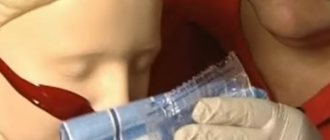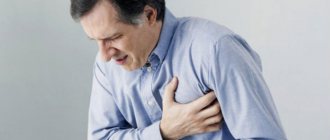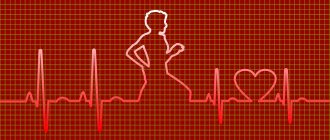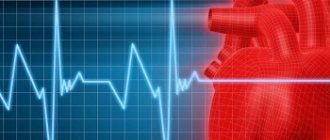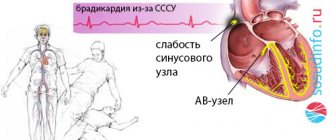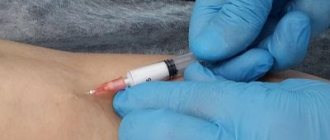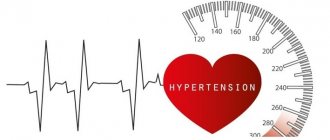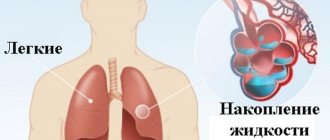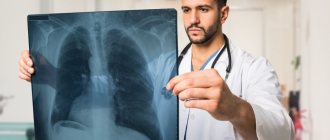The occurrence of external hemorrhoids is registered in a significant part of the population. Timely seeking professional help is rare; in this case, the proctologist chooses a conservative treatment regimen with the prescription of local medications. Many patients decide to visit a doctor in advanced cases, when treatment with local remedies alone is impossible and surgical intervention is required.
Classification of local drugs
Pharmaceutical companies produce several large groups of medications that are intended to suppress the symptoms of external hemorrhoids. Each type has its own spectrum of action. The list is presented:
- Venotonics - active ingredients increase the density of vascular walls, normalize capillary permeability. Due to them, there is an increase in the tone of the muscle tissue of the veins, and blood circulation is stabilized.
- Anticoagulants – medications used to treat blood clots. The active components are responsible for reducing the rate of blood clotting and preventing the formation of new blood clots.
- Hemostatics and coagulants - medications accelerate the process of blood clotting. Used to quickly stop bleeding from damaged tissues.
- Antispasmodics – relieve the symptoms of muscle spasms that provoke pain. They are used in the early stages of the pathological process; suppositories are a common form of release.
- Immunomodulators - due to active components, the functioning of the immune system improves. As a result, the body resists pathogenic microflora and easily suppresses outbreaks of infection and inflammation.
Complex therapy involves the use of several additional medications that do not affect hemorrhoidal disease. Anti-inflammatory drugs stop inflammation, antimicrobial drugs reduce the risk of secondary infection. Painkillers are used to suppress severe pain.
Causes
The root cause of hemorrhoids is a violation of the inflow and outflow of blood in the cavernous bodies of the rectum. Normally, the corpora cavernosa (also called cavernous bodies) help control the urge to defecate: when filled with blood, they “swell” and help retain feces in the intestines, and after a successful bowel movement, blood flows out and the corpora cavernosa shrink.
If the inflow/outflow regulation is disrupted and the corpora cavernosa have been engorged with blood for a long time, this causes the vascular walls to dilate and thin, making them much more susceptible to rupture or erosive lesions, which in turn cause inflammation and can lead to blood clots.
Factors that provoke venous stagnation
The following predisposing factors can provoke long-term venous congestion in the corpora cavernosa:
- Physical inactivity.
A low level of physical activity (due to sedentary work or simple laziness) causes extensive disturbances of venous blood flow throughout the body - and in the rectum in particular.
- High loads.
Ultra-high physical activity associated with lifting weights causes excessive tension in the abdominal muscles and rectal area, which also leads to disturbances in the venous blood flow.
- Chronic constipation.
The presence of feces in the rectum causes a constant, permanent filling of the cavernous bodies with blood, as mentioned above.
- Venous pathologies.
Impaired blood flow in hemorrhoidal veins can be caused by various vascular diseases.
- Oncology.
Tumor formations in the rectum cause disturbances in the inflow/outflow of blood due to mechanical compression of the venous vessels or their deformation due to tumor growth (in later stages).
- Diarrhea.
Severe diarrhea, especially caused by poisoning or infectious diseases, causes congestion of the venous system of the rectum, which leads to dilation of blood vessels or even micro-ruptures, followed by an inflammatory process.
- Pregnancy and childbirth.
Bearing and giving birth to a child is often accompanied by multiple disturbances in the pelvic venous circulation system, which can (but not necessarily) lead to the appearance of hemorrhoids.
- Obesity.
The presence of excess weight, by analogy with physical inactivity, also leads to multiple disturbances of venous blood flow.
- Bad habits.
Chronic alcohol abuse or long-term tobacco smoking provokes varicose veins, which primarily affects the pelvic region and lower extremities.
- Heredity.
Low hereditary elasticity of the venous vessels of the rectal area creates a predisposition to hemorrhoidal disorders - although it is not considered as their direct cause.
Features of the use of different forms
Depending on the type of medicine, its main characteristics and methods of administration into the body change. Proctologists prefer to use different forms of medication to achieve optimal results in the fight against hemorrhoids.
Pills
Most tablets have a natural component composition, which reduces the likelihood of allergic reactions. They are approved for use by pregnant and lactating women. The advantages of tablets include the method of their use - oral.
Some patients have a negative attitude towards suppositories due to their own prejudices or reluctance to perform procedures that are unpleasant for them. A regular tablet can be taken anywhere, if the occasion is appropriate; when taking it, it is enough to wash it down with water.
In addition to special drugs against hemorrhoidal disease, the treatment regimen may include drugs to stabilize the functioning of the gastrointestinal tract. They are prescribed when clinical signs of chronic diarrhea or constipation are detected in a patient.
To suppress the symptoms of external hemorrhoids, treatment is carried out using:
- Venorutona;
- Ginkor Fort;
- Glivenol;
- Detralexa;
- Pylexa;
- Phlebodia 600;
- Chemoroidin;
- Cyclo 3 forts.
Proctologists advise not to indulge in self-medication. The selection of the optimal remedy should be carried out by a doctor, based on the results of a laboratory diagnostic study. Incorrect selection of the drug can affect the general condition, complicate the course of the disease, and lead to complications.
Candles
Suppositories have a pronounced anti-inflammatory, venotonic and analgesic spectrum of action. Suppositories are among the best dosage forms for the treatment of hemorrhoids due to their direct effect on the affected area. Most medications have a mild effect and do not cause discomfort.
The disadvantages of the drugs are the complexity of use, the impossibility of administration in cases of severe pain and severe bleeding. The use of suppositories follows the standard scheme:
- The appointment is scheduled for the evening, before bedtime;
- Before the procedure, the intestines must be cleaned of feces;
- application takes place after the act of defecation - independent or provoked by a cleansing enema.
To prevent pathogenic microflora from penetrating damaged tissues, the patient must comply with all hygiene requirements. The suppository is installed in a vertical or horizontal position (on its side). After inserting the suppository, you cannot change your position for half an hour, otherwise the dissolved drug will leave the rectum and will not have the expected effect.
To combat thrombosis of hemorrhoids, therapy requires the use of:
- Anuzola;
- Diclofenac;
- Ibuprofen;
- Indomethacin;
- Methyluracil;
- Relief.
Suppositories have a number of advantages over tablets: they do not cause adverse reactions on the mucous membranes of the gastrointestinal tract, and are safer. Violation of the rules of use will negatively affect the results of therapy - the patient must follow the entire step-by-step treatment algorithm.
Effective drug treatment of hemorrhoids
Both women and men experience unpleasant symptoms of the disease equally. They can occur already in the first stages. The first “bells” may be a slight burning sensation in the anus, itching, discomfort and pain during bowel movements. Further, the painful sensations will only intensify, and bleeding may appear. During an exacerbation, dizziness, nausea and general malaise may occur. In the absence of proper treatment in the initial stages, hemorrhoids become chronic with periods of exacerbation and remission.
The symptoms of the acute phase of the disease can be relieved with the help of emergency therapy in the form of local products - gels, ointments and creams for external use to heal cracks and relieve swelling of the anus; rectal suppositories and suppositories that act on the tissue of the rectal mucosa; painkillers. When the first signs of inflammation of the hemorrhoids appear, you should immediately contact a proctologist to rule out other diagnoses and determine the stage of the disease.
Groups of painkillers for hemorrhoids
To treat hemorrhoidal “bumps,” a large number of herbal and synthetic drugs of various types are used, the names of which can be found in any pharmacy. Each group of drugs has its own indications for use, pharmacological effect and dynamics of effectiveness during the treatment process - how quickly and efficiently the drug can relieve pain from attacks of the disease.
The main list of the group includes the following names:
- Venotonics and phlebotonics - tablets increase vascular tone, improve blood microcirculation, and relieve symptoms of thrombosis. The most popular names of drugs in this group are “Phlebodia 600”, “Detralex”;
- Angioprotectors - act on damaged vessel walls, relieve inflammation and swelling, and promote effective tissue restoration of hemorrhoids. Popular drugs are Troxevasin and Ascorutin;
- Non-steroidal anti-inflammatory drugs - relieve inflammation, can relieve pain at any stage of the disease, even when cracks and tears appear in the nodes. This group includes Ketorolac, Nurofen, Ibuprofen;
- Antispasmodic drugs – relieve spasms and pain. The medicine relieves pain in the anus for a certain period and alleviates the patient’s condition. The most effective drug "No-Shpa";
- Anesthetic injections are one of the most potent groups of drugs that block pain. Injected into the anus or gluteal muscle. They are used in extreme cases when other medications do not help. Names of active drugs Lidocaine and Diclofenac;
- Preparations with herbal components are used in the initial stages of enlargement of hemorrhoidal “bumps”, when there are no complications in the form of anal fissures and regular bleeding. Basically, these are topical drugs.
Prevention of acute external hemorrhoids
- timely treatment of the initial stages of hemorrhoids and minimally invasive treatment;
- maintaining a healthy lifestyle with the introduction of a rational diet, physical activity, and absence of sedentary work;
- elimination of chronic constipation (nutrition, drinking regime);
- compliance with the principles of personal and intimate hygiene;
- visiting a specialized specialist, conducting diagnostics when the first symptoms of hemorrhoids appear;
There are contraindications - specialist consultation is required!
Treatment of acute external hemorrhoids
The choice of the most effective method of treating hemorrhoids depends on the clinical picture of the disease and concomitant pathologies in the patient.
- Surgery:
- thrombectomy
- excision of the hemorrhoid (possibly on an outpatient basis under local anesthesia)
- Conservative therapy:
- Drug treatment:
- painkillers (ointments, suppositories);
- combination drugs that have anti-inflammatory, astringent, decongestant and regenerating effects;
- use of heparin-containing agents (thrombolytic and hemostatic effects);
- prescription of venotonic drugs, mild laxatives.
- Lifestyle correction: giving up toilet paper (rising shower), caring for the perianal area and perineum, diet, work and rest.
Make an appointment
The duration of rehabilitation after surgical treatment is determined by the volume of surgical measures performed and the initial characteristics of the pathology in each patient.
What to do if you have undergone a course of conservative treatment for thrombosis
The abundance of means for the conservative treatment of thrombosis and often the doctor’s disposition to use this technique leads to the fact that most thromboses are treated conservatively. Patients come to our Clinic at different stages of the course of conservative therapy. Often this is a situation where, immediately after the occurrence of a blood clot, conservative therapy was started, some relief of the condition occurred, the pain syndrome decreased, but a “bump” remains in the anus and some pain. Sometimes completely healthy people come in who experienced an episode of acute thrombosis several months or years ago and are now concerned about the presence of skin “fringes,” excess skin in the anus that remain after the acute condition has resolved. They can interfere with the proper hygiene of this area and affect intimate life. What to do in this situation? And again, the main thing for the doctors of our Clinic will be the patient’s opinion. If you want to get rid of the manifestation of acute thrombosis, even if conservative treatment has already been carried out, a lot of time has passed - this can be done surgically.
Why should you contact a multidisciplinary medical center in Kolpino?
Treatment of hemorrhoids in Kolpino at the Caring Doctor clinic is carried out by experienced proctologists using modern diagnostic and treatment methods in accordance with the standards of medical care accepted throughout the world.
At your appointment during the examination of the intimate area, you will not feel any moral discomfort, our specialists perform it so professionally and delicately.
In addition, we should not forget that some proctological diseases, including hemorrhoids, have similar symptoms to such a terrible pathology as colorectal cancer. Therefore, it is important to contact a specialist as early as possible to make a correct diagnosis and effective treatment.
A timely visit to the doctors of our center will allow you to quickly and effectively get rid of hemorrhoids and its complications.
What are hemorrhoids?
The rectum is the final point of the human digestive system, and therefore plays a very important role. It is surrounded by a double - external and internal, hemorrhoidal plexus of veins, which ensures a hermetic closure of the anus.
If the blood flows in too much or flows out too slowly, blood stagnation forms in the veins. As a result, the vessels swell, forming hemorrhoids (they are also often called lumps). This causes pain, a sensation of a foreign object in the anus.
Under the influence of constant pressure from large accumulations of blood, the walls of the veins become thinner and collapse. Bleeding occurs, particles of feces and other contaminants get inside the vessels, which leads to the formation of a focus of inflammation. As a result, the pain becomes simply unbearable, the person can neither sit nor lie down, and is afraid to go to the toilet.

